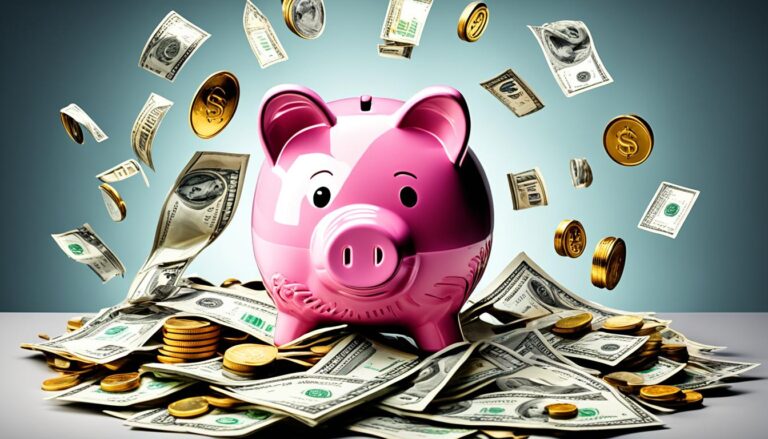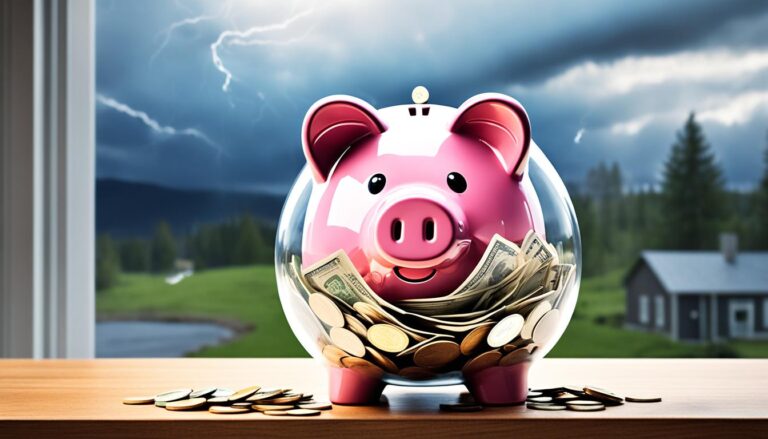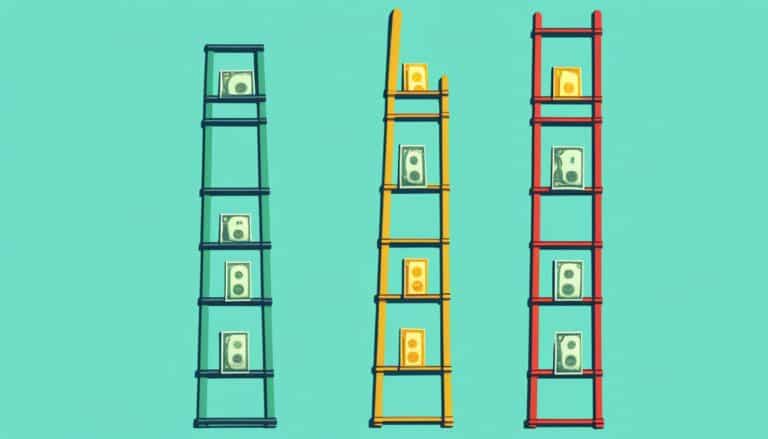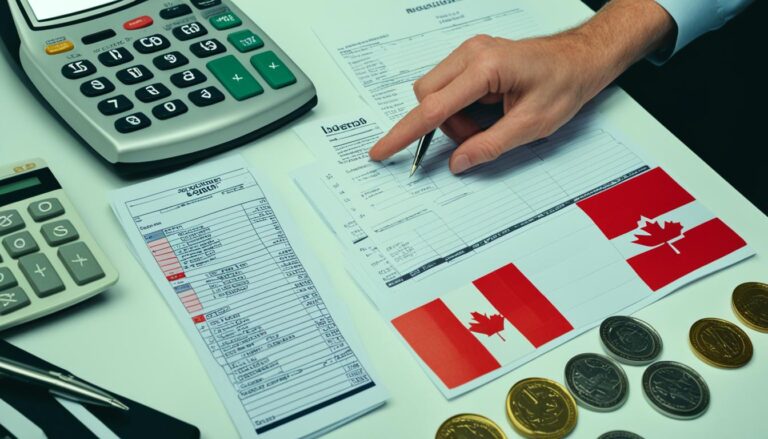Why You Should Consider a High-Interest Savings Account for Your Emergency Fund
Did you know that more than half of Canadians live paycheck to paycheck? This makes them very open to money emergencies. Unexpected bills like job loss, getting sick, or urgent repairs can hit hard. An emergency fund is a must-have financial backup. Experts say you should save three to six months of expenses.
Putting this fund in a high-interest savings account earns you more interest. Plus, you can get to your cash fast when it’s needed the most. It’s critical to keep your emergency cash away from other money. A Tax-Free Savings Account or a high-interest savings account works best. They offer good interest and easy access, without the risks associated with stocks or mutual funds.
For your emergency fund, consider simpler options like a guaranteed investment certificate (GIC). They are safe and grow steadily, making them a smart choice.
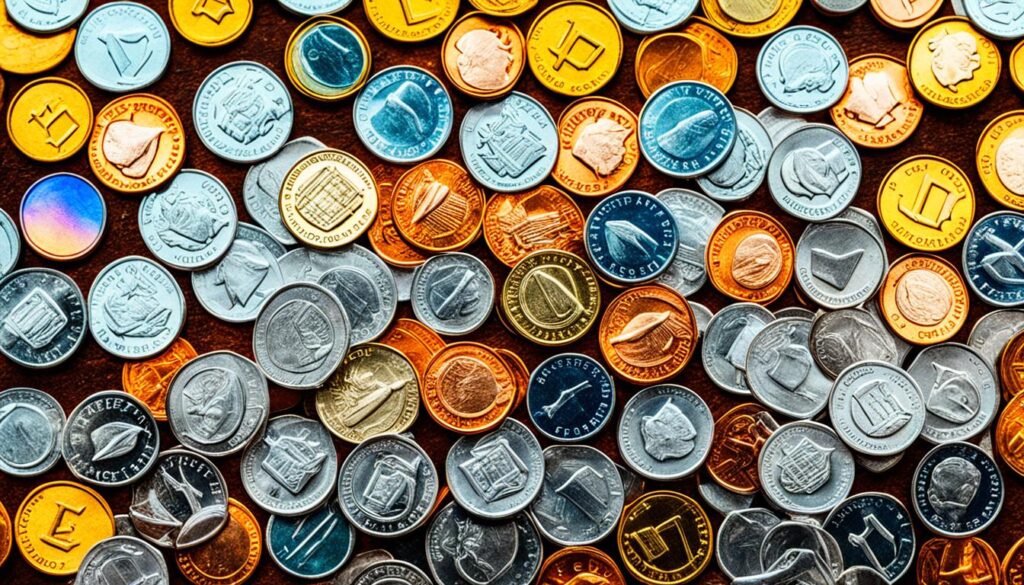
What is an Emergency Fund?
An emergency fund is money saved just for urgent, unexpected needs. It’s different from regular savings because it’s only for emergencies. This fund keeps you stable in surprise situations and helps you avoid financial stress. It’s not meant for daily costs but for real emergencies.
Why Everyone Needs an Emergency Fund
Unexpected financial problems can hit anyone at any time. Having an emergency fund is essential because of this. Over half of Canadians live paycheck to paycheck, which makes sudden costs risky. An emergency fund reduces this risk. It allows you to manage problems like job loss or health issues without altering your way of life.
Determining the Size of Your Emergency Fund
When figuring out your emergency fund size, look at your regular expenses. These include your house payment, bills, transport, food, and insurance. It is advisable to save three to six months’ worth of these expenses. If you’re unsure how much to save, some online calculators can help. Just do a quick Google Search.
The main point of an emergency savings fund is to keep you flexible financially so you can stay calm and prepared during financial ups and downs.
Advantages of a High-Interest Savings Account for Emergency Funds
High-Interest Savings Accounts (HISAs) are great for your emergency fund since they earn more interest than traditional accounts. This means your emergency savings can grow faster over time. It’s a smart way to make sure your money works for you.
Saving even small amounts adds up, and HISAs can really boost how much you save. With an Annual Percentage Yield (APY) of over 2.00%, they offer much more than regular savings accounts. This high interest rate means more money in your pocket for emergencies.
Let’s touch on the advantages of a High-Interest Savings Account for Emergency Funds
Immediate Access to Funds
It’s important to get to your savings fast in an emergency. High-Interest Savings Accounts let you do just that. Whether it’s for sudden medical bills or urgent repairs, you can count on HISAs for quick access to your funds.
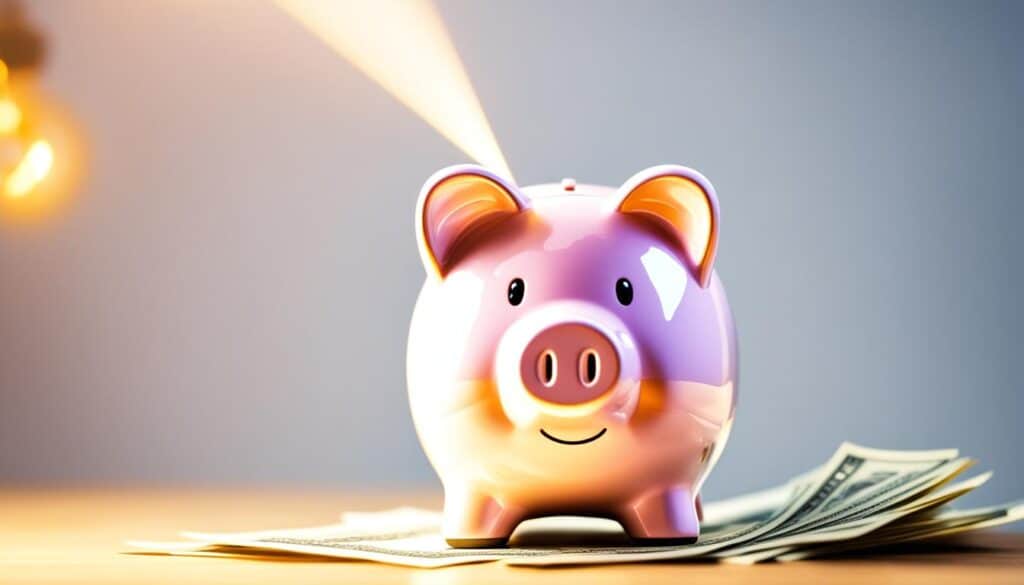
CDIC Insured
Many high-interest savings accounts are insured, so your money is safe up to certain limits. This insurance means you won’t lose your emergency funds even if the bank fails. In Canada, the CDIC offers protection for up to $100,000. This safety net isn’t always there with other savings options.
HISAs are a top-notch choice for managing your emergency funds. They combine high interest rates, easy access to your money, and CDIC insurance. By choosing HISAs, you’re ensuring your safety net is both strong and profitable.
How to Choose the Right High-Interest Savings Account
Choosing the right high-interest savings account is key to meeting your financial goals. You need to carefully weigh various factors.
Comparing Interest Rates and Fees
In Canada, high-interest savings accounts offer rates between 4.00% and 6.05%. For instance, Tangerine Tax-Free Savings Account gives new clients a 6.00% rate (Time-bound offer). Simplii Financial™ has a rate of 5.90%. Shop around and compare these rates. Doing your due diligence and comparing these rates is vital to your outcome. Also, check out for monthly fees. Monthly fees can slowly eat away at your savings.
Evaluating Accessibility and Withdrawal Options
Being able to get to your money easily is crucial when choosing a savings account. Unlike GICs that lock your money away, HISAs let you withdraw anytime6. This is especially important for an emergency fund.
Some banks make managing your funds simpler. They allow direct deposits into your checking account. Check if your financial institution offers this option.
Tax Implications of High-Interest Savings Account
Knowing the tax rules for HISAs is important. Unlike TFSAs, where you don’t pay tax on deposits or withdrawals up to a limit, HISAs are taxable. Learning the differences can help you choose better. A financial advisor can offer personalized advice.
Strategies to Build Your Emergency Fund Quickly
Getting your emergency fund set up fast means being strict and smart about your money. Start with automatic transfers to your savings, cut out things you don’t need, use any extra money you get wisely, and take help from finance apps. These steps can boost your savings quickly.
Automated Transfers and Direct Deposits
One smart move is automatic transfers to your savings. It stops you from spending extra cash. Online banks like KOHO and Simplii Financial can make these transfers for you. They help your savings grow without you having to worry about it.
Eliminating Unnecessary Expenses
Cutting down on what you don’t need grows your savings fast. For example,
- Skipping daily coffee shop visits and saving that money instead. Making your coffee can save you $260 a year.
- Cooking instead of eating out saves even more, like $1,040 a year with $20 a week.
- Avoid loans and debt as much as possible e.g. Car mortgage, financing a phone etc
Leveraging Lump Sum Payments
Use any big payments you receive, like tax refunds or bonuses, to boost your emergency fund. Putting these funds away quickly builds a strong safety net. Studies show this is super helpful, especially if your income changes a lot.
Using Financial Tools and Apps
Finance apps like KOHO can really help in saving regularly. They allow you to track spending, plan your savings, and set up automatic transfers. With these apps, you can keep a close eye on your finances and hit your saving goals easier.
Conclusion
Setting up an emergency fund is a crucial step in good financial planning. It acts as a safety net against unexpected money problems. This helps ensure you’re ready for tough times. High-yield savings or money market accounts are great for an emergency fund. They offer higher interest rates and quick access to your money, making them perfect.
To sum up, use high-yield accounts and financial tools to build a strong fund. These steps will prepare you for unexpected costs without hurting your finances. A financial advisor can tailor these tips to fit your specific needs.

Ogunjobi Oluwamuyiwa Felix preferred to be called Muyiwa Felix, is a personal finance coach and Insurance advisor. He creates content that addresses the core of personal finance in Canada, the United States, and the world at large. Daily, he meets up with clients who are interested in financial risk management, income protection, wealth-building, retirement planning, and tax-efficient investing strategies.


